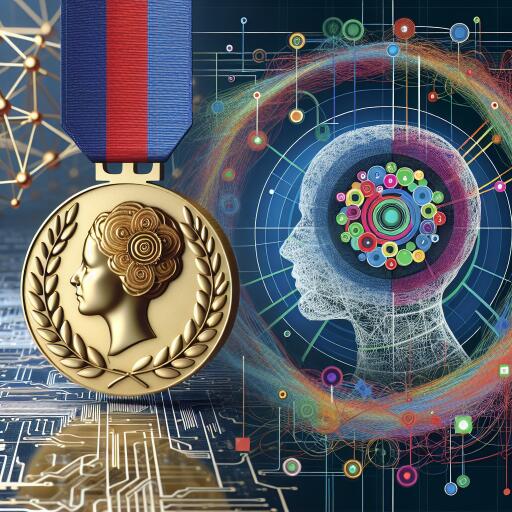Geoffrey Hinton’s Nobel Prize: A Journey Through AI Evolution
Geoffrey Hinton, a formidable force in the realm of artificial intelligence, has been honored with the 2024 Nobel Prize for Physics by the Royal Swedish Academy of Sciences. This accolade recognizes his groundbreaking contributions to deep learning, a field that lays the foundation for today’s most powerful AI models. Hinton shares this prestigious award with fellow computer scientist John Hopfield, whose invention of the Hopfield network, a type of pattern-matching neural network for storing and reconstructing data, has been pivotal in the evolution of AI.
Hinton advanced the concept of Hopfield networks by developing the backpropagation algorithm, a critical innovation that allows neural networks to learn effectively. This pioneering work in the 1980s and 90s ignited a revolution in artificial intelligence, propelling it to the forefront of technological progress today.
However, in a dramatic twist, Hinton’s journey has transformed him into an unexpected advocate for caution regarding AI’s future. As of May 2023, news broke, notably covered by MIT Technology Review, that Hinton had grown wary of the very technology he helped create. Now 76, Hinton stands as a prominent figure for “doomerism”—a perspective recognizing the tangible risks and potential catastrophic implications of advanced AI in the near future, including the unsettling possibility of human extinction.
This dual narrative of Hinton’s legacy reflects both the promise and peril of AI. The laurels of his Nobel Prize celebrate his pivotal contributions while his cautionary stance urges a careful examination of AI’s future trajectory. This juxtaposition captures the complex landscape of modern artificial intelligence, laden with potential but shadowed by ethical and existential concerns.
From Chatbots to Multimodal Marvels: The AI Evolution Continues
The landscape of artificial intelligence continues to evolve rapidly, pushing past the confines of text-based chatbots and embracing the capabilities of multimodal models. These models are adept at processing and synthesizing various inputs simultaneously—whether they be images, audio, or text—ushering in a new era of AI interaction tools that are more intuitive and multifunctional.
The advancement in multimodal generative content has been nothing short of meteoric. In a remarkably brief span, these models have achieved significant improvements, offering users interactive and highly customizable experiences. By enhancing the ways in which we engage with AI, these systems are gradually shifting away from traditional text interfaces to a more dynamic interplay of visual, auditory, and textual data.
Despite these advances, the search for a “killer app” that captures widespread imagination and use continues. Current developments highlight the tremendous potential for new applications, yet a definitive application that seamlessly integrates and exploits multimodal AI capabilities has yet to emerge. This ongoing exploration holds promise for groundbreaking uses that could redefine our interactions with technology across various domains.
Melissa Heikkilä, reflecting on these developments, underscores that while chatbots once captured the zeitgeist of AI’s capabilities, the present day heralds a broader horizon—AI systems that can hear, see, and click, marking a leap towards more holistic and immersive technological experiences.
As AI continues to transcend traditional boundaries, it invites us to rethink our relationship with technology, fostering environments where human creativity and machine intelligence can synergize. Whether through Nobel laureates like Hinton cautioning against unchecked advancement or the emergence of multimodal wonders, AI remains at the cusp of a transformative era, promising change that is as astonishing as it is unpredictable.










